Quick Summary
For taxi businesses, providing accurate navigation and mapping capabilities is crucial to ensure a seamless experience for passengers and drivers. This blog talks about the basics of Google Maps API, step-by-step integration guide, its key features and functionalities, benefits, types, best practices and tips, and how you can save all your Google Maps API integration and Google Maps costing with Yelowsoft.
Taxi hailing apps have changed the way taxi businesses used to run before. The technology-aided solutions have enhanced the pace, convenience, and overall riding experience for both riders and customers.
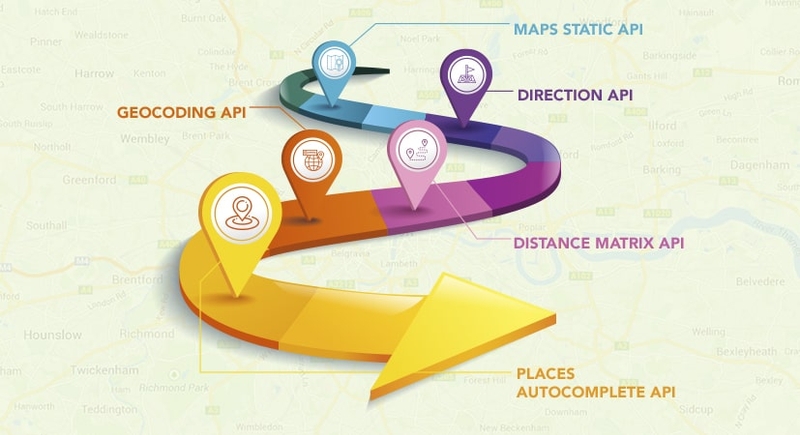
One key element that has assisted in this taxi revolution is the GPS. The GPS has solved numerous issues for drivers, customers, and the admin. It’s almost impossible to imagine an app-based taxi business without the GPS.
- How to integrate the GPS service into my app?
- Which GPS service will be best for my business?
- What is Google Maps API?
- What are the benefits of integrating it?
Below you will get answers to each of the above questions in detail. But let’s start with the basics.
What is Google Maps API?
Google Maps API is a powerful tool that allows developers to integrate Google Maps into your ride hailing app or taxi booking app. It provides your users with a rich and interactive mapping experience.
Features and functionalities
Google Maps API offers a plethora of features and functionalities that can greatly enhance the user experience while using your taxi booking app. Some of the key features include:
- Interactive maps
- Turn-by-turn navigation
- Real-time traffic updates
- Geocoding
- Place searchers
With these features, you can enhance your app using experience for the user. And make it easier for them to request rides, track drivers and deliveries, and navigate to the destination hassle-free.
Now, the question many taxi dispatchers and ride hailing service providers often ask and should ask,
- Why only Google Maps?
- Are there no other Maps API service providers?
The answer is – yes. There are other service providers. But, the most popular and trusted currently in offering reliable GPS services is Google Maps. Let us know in detail below.
Why Google Maps?
Google Maps is undoubtedly the most widely used mapping service in the world. There are reasons as to why Google Maps have been on the top. Let’s have a look at them one by one.
It’s the biggest maps service
One thing that makes Google Maps stand out is the fact that it encompasses almost the whole world. This means a huge bonus for your taxi business as your driver will always get GPS assistance even if he/she is in the remotest region of the planet.
It has a humongous amount of data
Another big reason to choose Google Maps over any other service is the mammoth amount of data that Google has collected over the years.

Google Maps is very close to an ideal framework for mapping. It provides you with information such as;
- Transit schedules
- Traffic information
- Changes in city layouts and many more
This information is vital for your customers using your app.
We saw how Google Maps is the only game in the market. Now, let’s see what are the types of APIs and their benefits that your taxi booking system must entail.
Types of Google Maps APIs and their benefits
Google Maps API offers a variety of features to enhance your taxi app's functionality. Let me walk you through the different types and how each can benefit your business.
Places autocomplete API
This API is called whenever a user enters the pick-up or drop-off location. Whenever the user types a few letters and stops for a while, the search bar will show a drop-down list. The API would be called every time the search bar shows the drop-down list.
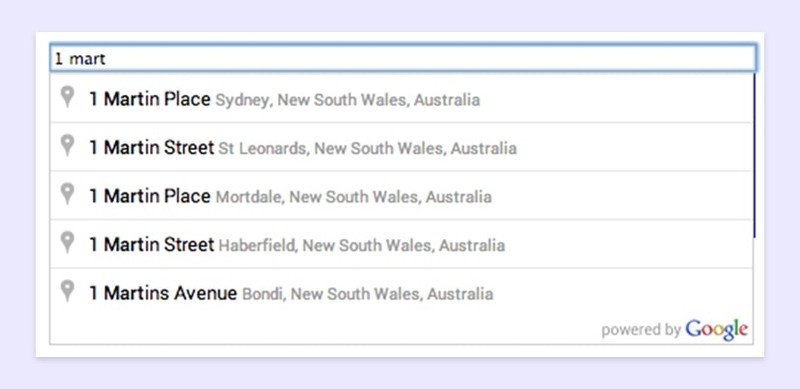
This API helps in providing accurate locations with minimal keystrokes. On an average, it takes 4-6 API calls for a user to enter both pick-up and drop-off locations.
Benefits:
- Provide relevant information about nearby places (ratings, reviews, hours)
- Allow users to search for specific types of places ("Italian restaurants near me")
- Enhance user experience with location-based recommendations
- Help users find essential services or Distance matrix API
amenities during trips
Geocoding API
Once the customer selects the correct location from the drop-down list, the geocoding API will locate that place on the maps with geographical coordinates like latitudes and longitudes. This API helps you to place markers on the maps.
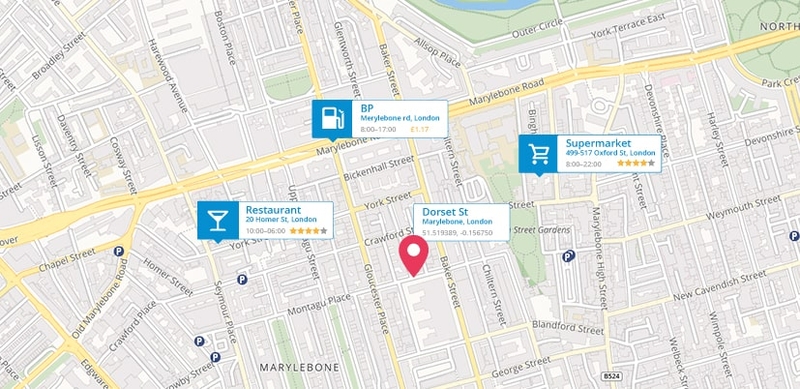
Benefits
- Allow users to search for locations by address
- Display accurate pin drops/markers for specific addresses
- Improve user experience with address autocomplete
- Enable location-based services by converting coordinates to addresses
Distance matrix API
The Distance Matrix API provides you with information such as the distance and time that a cab would take from the origin to the destination. Information sent by this API is based on the route selected between the two points.
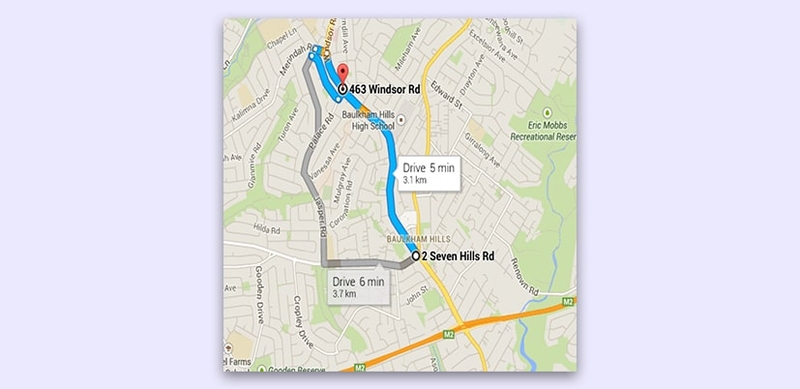
This API is useful because following the “Straight Line” approach to finding the nearest taxi often causes misleading results.
It also solves confusion in cases where the taxi is near the rider but on the opposite side of the road which would cause the cab to take more time to reach the destination.
Benefits
- Calculate travel times and distances between multiple pickup/drop-off points
- Consider real-time traffic conditions for accurate estimates
- Optimize routes by finding the shortest or fastest paths
- Provide accurate fare estimates based on distance and travel time
Direction API
This API determines directions between the locations. It provides your drivers with directions while driving. Direction API is also used to show the ETA (estimated time of arrival) to the user. Since ETA changes with time, the direction API is called periodically after a fixed interval of time.
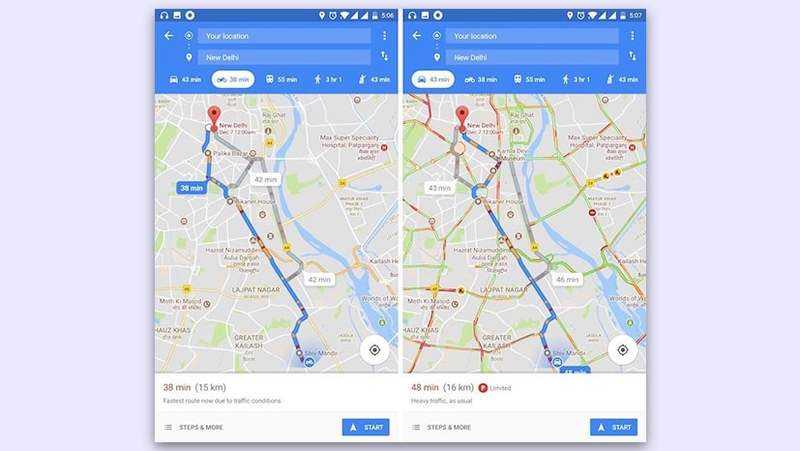
Direction API also provides the estimated fare to the customer before the start of the trip. This fare is based on the routes and the current traffic conditions.
Benefits
- Get accurate turn-by-turn navigation instructions
- Consider real-time traffic conditions for efficient routes
- Estimate travel times and distances for better planning
- Offer alternative routes to avoid delays or closures
Maps static API
The Maps Static API provides you with a Google Maps image on your web page. Moreover, you won’t require JavaScript or any other dynamic page loading.
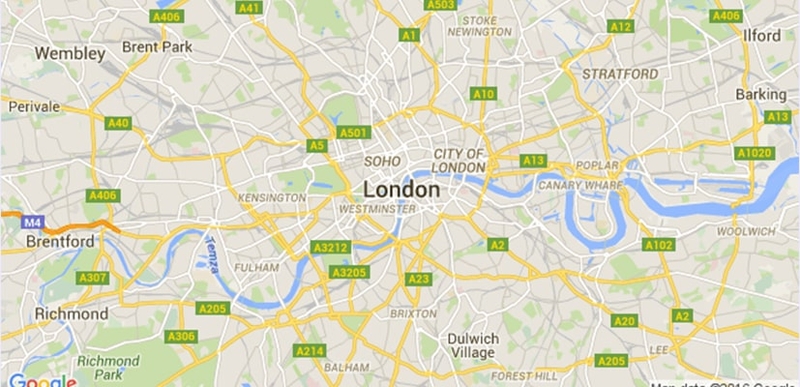
The working principle is quite simple, it just creates the maps which are based on URL parameters.
These URL parameters are sent through standard HTTP requests. At the end, it returns the map image that you can display on the web page.
Benefits
- Provide a visually appealing and user-friendly map experience
- Customize map appearance and features
- Display important locations with markers/pins
- Allow users to interact with the map (zoom, pan, click)
Creating a Google cloud platform (GCP) account
Before you can start integrating Google Maps API into your taxi-hailing app, you'll need to create a Google Cloud Platform (GCP) account.
GCP is a comprehensive suite of cloud computing services provided by Google, and it serves as the platform for managing and accessing various Google APIs, including Google Maps API.
To create a GCP account, follow these steps:
- Visit the Google Cloud Platform website (https://cloud.google.com/).
- Click on the "Get Started for Free" button.
- Follow the prompts to create your account, providing the necessary information such as your email address and payment details.
After you successfully create the account on the Google cloud platform, you have to focus on the below-mentioned steps to integrate Google Maps API.
A step-by-step guide to Google Maps API integration
Integrating Google Maps API into your taxi booking app can be a game-changer. Follow these steps to seamlessly integrate Google Maps APIs.
Integrate Google Maps SDK for Android/iOS
To integrate Google Maps into your taxi-hailing app, you'll need to follow platform-specific steps for Android and iOS. Here's a general overview of the process:
Install necessary dependencies
- For Android, add the Google Play Services library to your project's dependencies.
- For iOS, install the Google Maps SDK via CocoaPods or manually.
Set up the API key in the app configuration
- Obtain an API key from the Google Cloud Console, as discussed earlier.
- In your app's configuration file (e.g., AndroidManifest.xml for Android or Info.plist for iOS), add the API key and any other required metadata.
Implement map views and markers
- In your app's code, create a map view and set the necessary properties (e.g., map type, camera position).
- Add markers to the map to represent locations of interest, such as pick-up and drop-off points.
- Implement event handlers to respond to user interactions with the map (e.g., tap, pan, zoom).
Implement directions API for navigation
Providing accurate turn-by-turn navigation is crucial for taxi-hailing apps. The Directions API enables you to calculate optimal routes and guide drivers and passengers efficiently.
Request directions between two points
- Use the Directions API to calculate the optimal route between the pick-up and drop-off locations.
- Pass the necessary parameters, such as mode of transportation, origin, destination, and waypoints (if any).
- Handle the API response, which includes the step-by-step navigation instructions and polyline data for rendering the route on the map.
Display routes and navigation instructions
- Render the calculated route on the map using the polyline data provided by the Directions API.
- Display turn-by-turn navigation instructions to the driver and rider, either visually or through audio prompts.
- Implement real-time updates to reflect the driver's progress along the route.
Utilize Geocoding API for address lookup
Enhance user experience by allowing address lookup and conversion to geographic coordinates. The Geocoding API empowers your app to display accurate location markers.
Convert addresses to geographic coordinates
- Use the Geocoding API to convert user-entered addresses into geographic coordinates.
- Pass the address string as a parameter to the API.
- Handle the API response, which includes the latitude and longitude coordinates for the specified address.
Display Locations on the Map
- Use the coordinates obtained from the Geocoding API to position markers or pins on the map.
- Implement functionality to allow users to search for locations by address or place name.
- Optionally, integrate with the Places API for more advanced location-based services.
Enhance user experience with places API
Elevate your app's functionality by integrating the Places API. Discover nearby points of interest, offer relevant suggestions, and delight users with location-based services.
Integrate nearby places search functionality
- Use the Places API to search for nearby places of interest, such as restaurants, gas stations, or ATMs.
- Pass parameters like location, radius, and place type to the API.
- Handle the API response, which includes a list of places matching the search criteria.
Provide relevant suggestions to users
- Display the list of nearby places to users, either as markers on the map or in a separate list view.
- Provide additional information about each place, such as ratings, reviews, and opening hours.
- Implement functionality to allow users to navigate to or obtain directions to a selected place.
Optimize performance with distance matrix API
Improve route optimization and accurate travel time estimates with the Distance Matrix API. Calculate distances, consider real-time traffic data, and deliver efficient service.
Calculate travel distances and durations dynamically
- Use the Distance Matrix API to calculate travel distances and durations between multiple locations.
- Pass parameters such as origins, destinations, mode of transportation, and traffic conditions.
- Handle the API response, which includes the travel times and distances between each origin-destination pair.
Adjust routes based on real-time traffic data
- Integrate the Distance Matrix API with real-time traffic data to provide accurate travel time estimates.
- Recalculate routes and adjust navigation instructions based on current traffic conditions.
- Provide updated ETAs and alternative routes to drivers and riders, ensuring efficient and timely service.
Here, we are done with the steps to integrate Google maps APIs. I tried to explain in a simple manner and hope you will now be able to integrate them into your ride hailing software.
However, if you are still confused, you can always reach our best taxi booking app developers for help. Let us now see how much Google charges for the requests users make.
Google Maps API pricing
We saw how important Google Maps is for your system. But you might have a question about how much it would cost. So, let’s talk about the pricing of Google Maps API.
Let me help you with the official rates Google charges with the help of screenshots.
- Static Maps will cost you;

- Dynamic Maps will cost you;
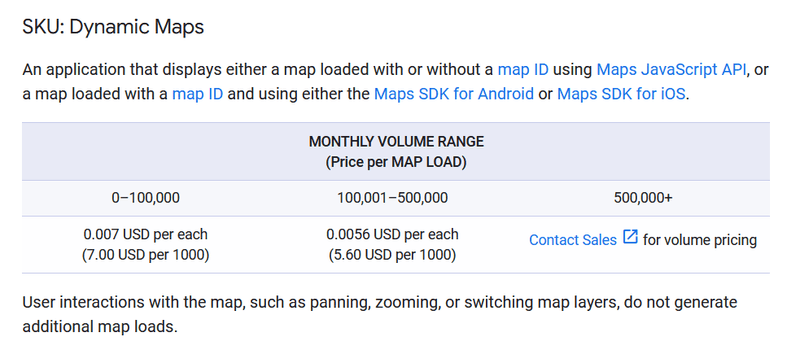
- Prices for static street view are;
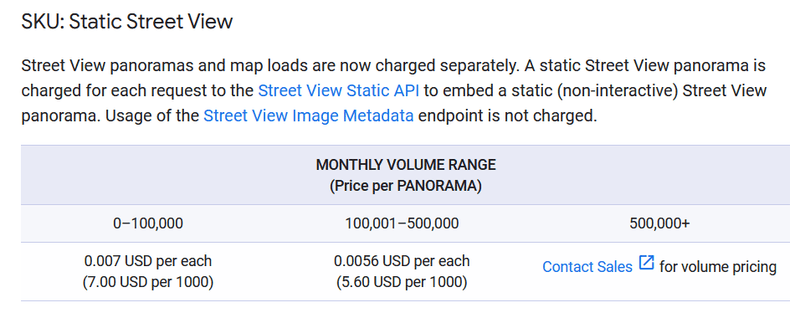
Read More: How taxi booking app reduces the operational cost?
- To offer a dynamic street view to your users, the charges are;
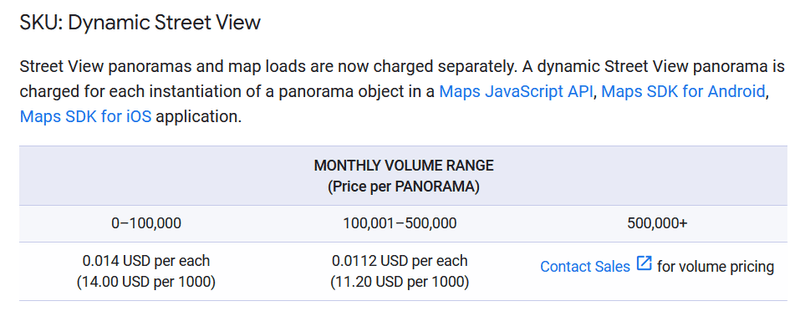
- Check out the pricing for Google’s route products. For just directions, it will cost you;
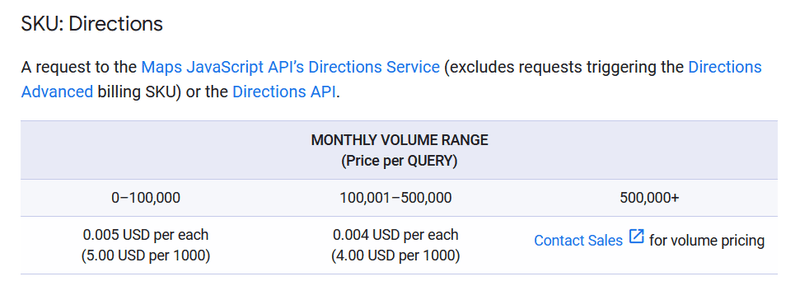
- Distance matrix will cost you around;
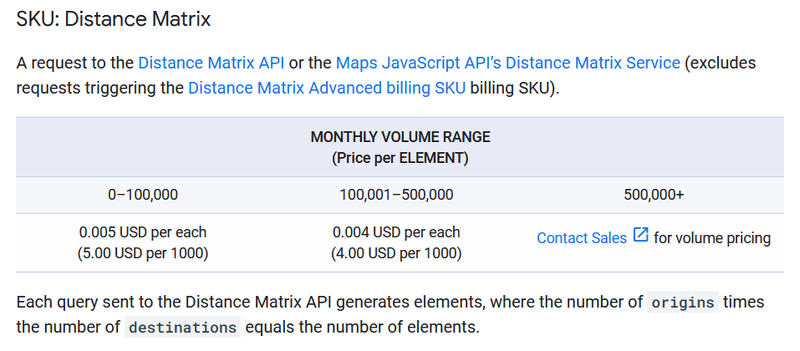
- The road route will cost you around;

There are more APIs that Google offers. To get more information in detail, you reach their direct official page here - google maps billing and pricing.
You can also refer to this google page to get pricing information.
How Yelowsoft can help you with Google Maps API integration and billing
Yelowsoft is a trusted company that offers a ready-to-use SAAS-based white-label ride-hailing platform with built-in Google Maps integration.
By partnering with Yelowsoft, you can streamline your taxi hailing operations while benefiting from the powerful mapping capabilities of Google Maps API.
From Yelowsoft, you will get:
Built-in Google Maps integration Yelowsoft's taxi dispatch software comes pre-integrated with Google Maps API. This eliminates the need for you to handle the technical integration themselves.
Zero billing Google Maps API You get to use Google Maps for free when you use Yelowsoft’s ride-hailing solution. This allows you to focus on growing your operations without worrying about managing API usage and costs.
Ready to use saas-based white-label solution Yelowsoft's taxi booking platform is a white-label solution. It means you can launch your branded taxi-hailing app in just 3 weeks maximum with your brand name, logo, color, and taste. And all these at just a subscription-based price. (similar to what you make for Netflix).
Conclusion
GPS and mapping service is an inevitable part of a taxi booking app. Moreover, it becomes important that you choose the best service while keeping in mind your budget constraints.
I hope this article brought clarity in mastering the integration steps and knowing the importance, benefits, types, features, and pricing of the Google Maps API integration.
If you’re a startup, entrepreneur, or a taxi business owner running a business for years and are looking for a robust white-label ride hailing solution that could boost your sales by 5X then Yelowsoft is a suitable solution that you must have a look at.

FAQ's
Integrating GPS into your app involves utilizing a GPS-based service or API that provides location data. You can achieve this by incorporating a location-based service provider's SDK, such as Google Maps SDK for Android or Core Location framework for iOS, into your app's codebase. These SDKs offer functions to access device location, track movement, and receive updates in real-time, allowing you to seamlessly integrate GPS functionality into your app.
When it comes to GPS services for your taxi business, Google Maps API is widely considered one of the best options. It offers accurate location data, real-time traffic updates, and a wide range of mapping tools that can significantly enhance your app's functionality. Additionally, Google Maps API is constantly updated, ensuring that your app always has access to the latest mapping data and features.
Google Maps API is a powerful set of tools and services provided by Google that allows developers to integrate Google Maps functionality into taxi booking applications. It offers a vast array of features, including interactive maps, turn-by-turn navigation, geocoding (address to coordinate conversion), nearby places search, and much more. By leveraging Google Maps API, you can create a rich and engaging mapping experience for your taxi hailing app.
Integrating Google Maps API into your taxi hailing app comes with numerous benefits. First and foremost, it provides accurate and up-to-date mapping data. This ensures that your customers receive reliable navigation assistance. Additionally, features like real-time traffic updates and optimized routing can help your drivers navigate more efficiently, reducing wait times and improving overall service quality. Furthermore, the ability to display nearby places of interest and integrate location-based services can enhance the user experience, potentially leading to increased customer satisfaction and retention.



